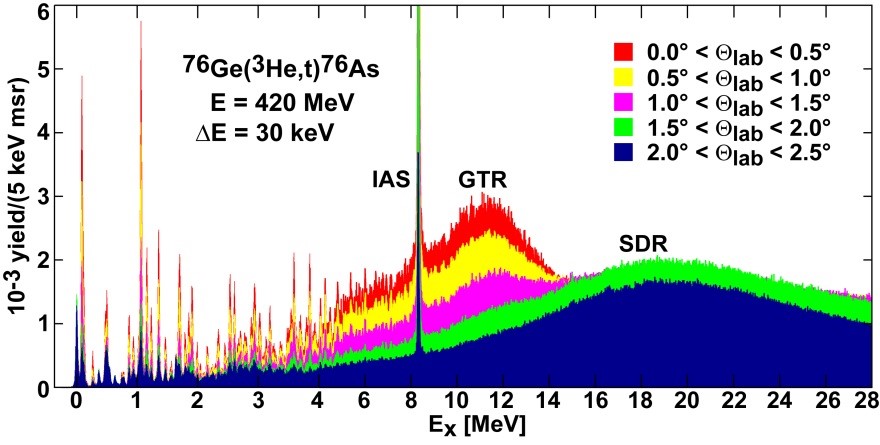News
EPJ E Highlight - The physics of extracting gas from shale formations
- Details
- Published on 21 November 2018

A new study outlines the key parameters affecting the production of gas from shale reservoirs, by simulating what is happening at the microscopic scale.
Extracting gas from new sources is vital in order to supplement dwindling conventional supplies. Shale reservoirs host gas trapped in the pores of mudstone, which consists of a mixture of silt mineral particles ranging from 4 to 60 microns in size, and clay elements smaller than 4 microns. Surprisingly, the oil and gas industry still lacks a firm understanding of how the pore space and geological factors affect gas storage and its ability to flow in the shale. In a study published in EPJ E, Natalia Kovalchuk and Constantinos Hadjistassou from the University of Nicosia, Cyprus, review the current state of knowledge regarding flow processes occurring at scales ranging from the nano- to the microscopic during shale gas extraction. This knowledge can help to improve gas recovery and lower shale gas production costs.
EPJ Plus article on Breast cancer: latest improvements in mammography selected for Springer Nature Grand Challenges Programme
- Details
- Published on 20 November 2018

A novel technique provides high performance in the analysis of mammographic images
Breast cancer is a disease predominantly affecting females and in the last decades the incidence rate rose. Nowadays, main risk factors, apart from genetic predisposition, include obesity, physical inactivity, hormone replacement therapy during menopause, and alcohol consumption. During the 1980s and 1990s, mammography screening has taken hold detecting many new cases. This technique takes advantage of low energy X-rays to examine breast tissues and early detect masses or microcalcifications, which are cancer’s ‘alarm bells’. Major issues in mammography concern the development of methods allowing a fast and clear interpretation of the collected screening images.
A group of scientists (B. Mughal et al.) reports on the European Physical Journal Plus (EPJ Plus) a new technique to improve the screening images reconstruction in order to achieve high accuracy.
EPJ D Highlight - Fullerene compounds made simulation-ready
- Details
- Published on 14 November 2018

New model helps understand compound nanomolecules made of football-shaped fullerenes
What in the smart nanomaterials world is widely available, highly symmetrical and inexpensive? Hollow carbon structures, shaped like a football, called fullerenes. Their applications range from artificial photosynthesis and nonlinear optics to the production of photoactive films and nanostructures. To make them even more flexible, fullerenes can be combined with added nanostructures. In a new study published in EPJ D, Kirill B. Agapev from ITMO University, St. Petersburg, Russia, and colleagues have developed a method that can be used for future simulations of fullerene complexes and thus help understand their characteristics.
EPJ D Highlight - Doubly-excited electrons reach new energy states
- Details
- Published on 13 November 2018

New energy states reached by electrons entering resonance in three-particle systems may open the door to using similar calculations in atomic and nuclear physics
Positrons are short-lived subatomic particle with the same mass as electrons and a positive charge. They are used in medicine, e.g. in positron emission tomography (PET), a diagnostic imaging method for metabolic disorders. Positrons also exist as negatively charged ions, called positronium ions (Ps-), which are essentially a three-particle system consisting of two electrons bound to a positron.
Now, commercially available lasers are capable of producing photons that carry enough energy to bring the electrons of negatively charge ions, like Ps−, to doubly-excited states, referred to as D-wave resonance. Positronium ions are, however, very difficult to observe because they are unstable and often disappear before physicists get a chance to analyse them.
Sabyasachi Kar from the Harbin Institute of Technology, China, and Yew Kam Ho from the Academia Sinica, Taipei, Taiwan, have now characterised these higher energy levels reached by electrons in resonance in these three-particle systems, which are too complex to be described using simple equations. This theoretical model, recently published in EPJ D, is intended to offer guidance for experimentalists interested in observing these resonant structures. This model of a three-particle system can be adapted to problems in atomic physics, nuclear physics, and semiconductor quantum dots, as well as antimatter physics and cosmology.
EPJ Plus article on first steps towards microplastics regulation in Europe selected for Springer Nature Grand Challenges Programme
- Details
- Published on 07 November 2018

In modern times, assessing the impact of climate change on the vulnerability of radiological practices is necessary to implement risk management policies and secure facilities.
Scientific, political and socio-economic aspects of the dossier on plastic pollution solicited by the European Commission.In November 2017, as part of the EU Plastics Strategy, the European Commission (EC) requested that the European Chemical Agency (ECHA) develop a dossier on microplastics' restriction under REACH. REACH is a EU chemical regulation adopted in 2006, and its aims are the protection of human health and the environment.
The requested restriction process concerns not only environmental and health risk assessments but is closely related to socio-economic impacts within the union. Therefore, several EU committees, such as the Risk Assessment Committee (RA) and the Committee for Socio-Economic Analysis (SEA) are involved in the examination of the preparatory study submitted by ECHA.
The whole restriction process is clearly described by E. Kentin in European Physical Journal Plus (EPJ Plus).
EPJ E Highlight - Pore size alone does not matter when biological nanopores act as sugar chain biosensors
- Details
- Published on 07 November 2018

The effectiveness of nanopore biosensors capable of identifying sugar chains from biological molecules involved in key biological processes also depends on the nanopore's electrical charge and inner pore design
Protein nanopores are present in cell membranes and act as biological gateways. This means that they can also be used for the detection of specific bioactive molecular chains, like sugar chains, such as molecules from the glycosaminoglycan family. The latter are responsible for key interactions at the cellular level. They typically mediate interactions with cell surfaces or with proteins, resulting in the activiation of physiological and pathological effects in embryonic development, cell growth and differentiation, inflammatory response, tumour growth and microbial infection. The use of such nanopores as biosensors requires to fully understand the intricate mechanisms occurring as sugar chains pass through them. In a new study published in EPJ E, Aziz Fennouri from Paris-Saclay University in Evry, France, and colleagues outline the key criteria determining the effectiveness of two types of nanopores in the detection of sugar chains.
EPJ B Highlight - Factors affecting turbulence scaling
- Details
- Published on 06 November 2018

Study focuses on hydrodynamic effects of external disturbances on fluids at critical points, including inconsistent turbulence in all directions, or anisotropy, and varying degrees of compressibility
Fluids exhibiting scaling behaviour can be found in diverse physical phenomena occurring both in the laboratory and in real-world conditions. For instance, they occur at the critical point when a liquid becomes a vapour, at the phase transition of superfluids, and at the phase separation of binary liquids whose components exhibit two different types of behaviour.
Until now, models have not fully taken the effect of external turbulences into account. In a recent study published in EPJ B, Michal Hnatič from Šafárik University in Košice, Slovakia and colleagues investigate the influence of ambient turbulent speed fluctuations in physical systems when they reach a critical point. These fluctuations are found to be the result of a lack of spatial regularity in these systems, or anisotropy, and of the compressibility of fluids. What is unique about this study is that the turbulence introduced in the model is novel and helps to elucidate the extent to which the speed of these fluctuations affects their scaling behaviour.
Gero Thomas Medal 2018 awarded to Angela Oleandri
- Details
- Published on 26 October 2018

The Gero Thomas Medal 2018 was awarded to Angela Oleandri for her outstanding and sustained contributions to the development of physics publications in Europe, including her support to the creation and development of the EPJ series of journals and Europhysics Letters (EPL). Angela Oleandri was for 20 years a member of the EPJ Steering Committee and the Editorial Director of the Società Italiana di Fisica from 2005 to 2016.
EPJ A Highlight - The power of resolution in charge-exchange reactions
- Details
- Published on 25 October 2018

This review highlights the extraordinary power of the hadronic charge-exchange reactions at intermediate energies and at highest spectral resolution, as exemplified by the (n,p)-type (d,2He) and the (p,n)-type (3He,t) reactions. The review shows how areas of nuclear physics, astrophysics and particle physics alike benefit from such enhanced resolution. A major part of this review focuses on weak interaction processes in nuclei, especially on those, where neutrinos play a pivotal role like in solar neutrino induced reactions or in ßß decay. Unexpected and even surprising new features of nuclear structure are being unveiled as a result of high resolution. (See figure).
EPJ A has a new Editor in Chief for Theoretical Physics II
- Details
- Published on 24 October 2018

From October 2018 David Blaschke succeeds Tamás S. Biró as Editor in Chief of EPJ A for the section Theoretical Physics II: Hadron Physics and Quark Matter.
David Blaschke is Professor for Theoretical Physics of the University of Wroclaw and leading scientist at the Joint Institute for Nuclear Research in Dubna. His research interest is in developing quantum field theoretical models of strongly interacting matter to describe the transition from hadronic matter to the quark gluon plasma in the QCD phase diagram. He studies applications of these models to the physics of compact stars, their mergers and to relativistic heavy-ion collisions.




